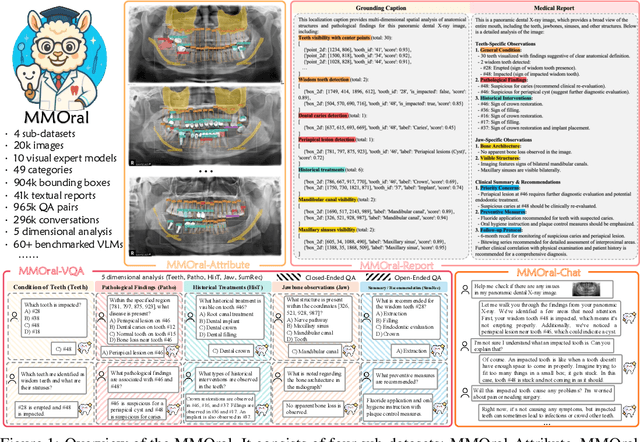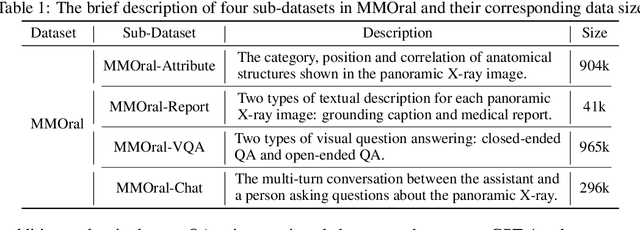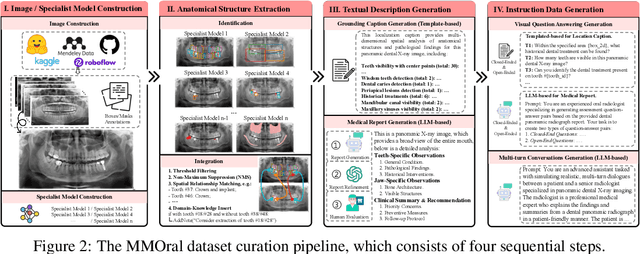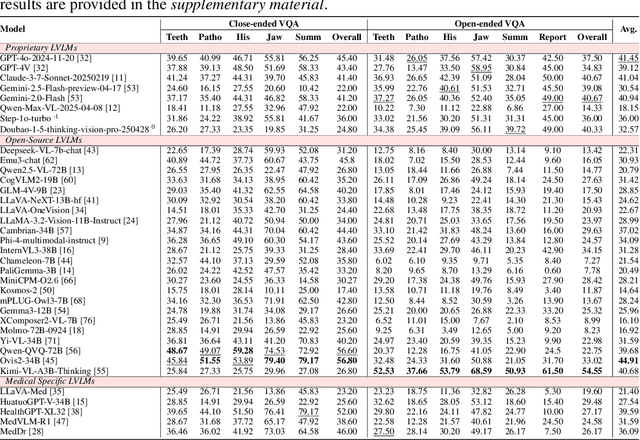Hao Tang
TwinAligner: Visual-Dynamic Alignment Empowers Physics-aware Real2Sim2Real for Robotic Manipulation
Dec 22, 2025Abstract:The robotics field is evolving towards data-driven, end-to-end learning, inspired by multimodal large models. However, reliance on expensive real-world data limits progress. Simulators offer cost-effective alternatives, but the gap between simulation and reality challenges effective policy transfer. This paper introduces TwinAligner, a novel Real2Sim2Real system that addresses both visual and dynamic gaps. The visual alignment module achieves pixel-level alignment through SDF reconstruction and editable 3DGS rendering, while the dynamic alignment module ensures dynamic consistency by identifying rigid physics from robot-object interaction. TwinAligner improves robot learning by providing scalable data collection and establishing a trustworthy iterative cycle, accelerating algorithm development. Quantitative evaluations highlight TwinAligner's strong capabilities in visual and dynamic real-to-sim alignment. This system enables policies trained in simulation to achieve strong zero-shot generalization to the real world. The high consistency between real-world and simulated policy performance underscores TwinAligner's potential to advance scalable robot learning. Code and data will be released on https://twin-aligner.github.io
Geometric Laplace Neural Operator
Dec 18, 2025Abstract:Neural operators have emerged as powerful tools for learning mappings between function spaces, enabling efficient solutions to partial differential equations across varying inputs and domains. Despite the success, existing methods often struggle with non-periodic excitations, transient responses, and signals defined on irregular or non-Euclidean geometries. To address this, we propose a generalized operator learning framework based on a pole-residue decomposition enriched with exponential basis functions, enabling expressive modeling of aperiodic and decaying dynamics. Building on this formulation, we introduce the Geometric Laplace Neural Operator (GLNO), which embeds the Laplace spectral representation into the eigen-basis of the Laplace-Beltrami operator, extending operator learning to arbitrary Riemannian manifolds without requiring periodicity or uniform grids. We further design a grid-invariant network architecture (GLNONet) that realizes GLNO in practice. Extensive experiments on PDEs/ODEs and real-world datasets demonstrate our robust performance over other state-of-the-art models.
FOD-Diff: 3D Multi-Channel Patch Diffusion Model for Fiber Orientation Distribution
Dec 18, 2025Abstract:Diffusion MRI (dMRI) is a critical non-invasive technique to estimate fiber orientation distribution (FOD) for characterizing white matter integrity. Estimating FOD from single-shell low angular resolution dMRI (LAR-FOD) is limited by accuracy, whereas estimating FOD from multi-shell high angular resolution dMRI (HAR-FOD) requires a long scanning time, which limits its applicability. Diffusion models have shown promise in estimating HAR-FOD based on LAR-FOD. However, using diffusion models to efficiently generate HAR-FOD is challenging due to the large number of spherical harmonic (SH) coefficients in FOD. Here, we propose a 3D multi-channel patch diffusion model to predict HAR-FOD from LAR-FOD. We design the FOD-patch adapter by introducing the prior brain anatomy for more efficient patch-based learning. Furthermore, we introduce a voxel-level conditional coordinating module to enhance the global understanding of the model. We design the SH attention module to effectively learn the complex correlations of the SH coefficients. Our experimental results show that our method achieves the best performance in HAR-FOD prediction and outperforms other state-of-the-art methods.
Generalized Spherical Neural Operators: Green's Function Formulation
Dec 11, 2025Abstract:Neural operators offer powerful approaches for solving parametric partial differential equations, but extending them to spherical domains remains challenging due to the need to preserve intrinsic geometry while avoiding distortions that break rotational consistency. Existing spherical operators rely on rotational equivariance but often lack the flexibility for real-world complexity. We propose a general operator-design framework based on the designable spherical Green's function and its harmonic expansion, establishing a solid operator-theoretic foundation for spherical learning. Based on this, we propose an absolute and relative position-dependent Green's function that enables flexible balance of equivariance and invariance for real-world modeling. The resulting operator, Green's-function Spherical Neural Operator (GSNO) with a novel spectral learning method, can adapt to anisotropic, constraint-rich systems while retaining spectral efficiency. To exploit GSNO, we develop GSHNet, a hierarchical architecture that combines multi-scale spectral modeling with spherical up-down sampling, enhancing global feature representation. Evaluations on diffusion MRI, shallow water dynamics, and global weather forecasting, GSNO and GSHNet consistently outperform state-of-the-art methods. Our results position GSNO as a principled and general framework for spherical operator learning, bridging rigorous theory with real-world complexity.
MIRNet: Integrating Constrained Graph-Based Reasoning with Pre-training for Diagnostic Medical Imaging
Nov 13, 2025Abstract:Automated interpretation of medical images demands robust modeling of complex visual-semantic relationships while addressing annotation scarcity, label imbalance, and clinical plausibility constraints. We introduce MIRNet (Medical Image Reasoner Network), a novel framework that integrates self-supervised pre-training with constrained graph-based reasoning. Tongue image diagnosis is a particularly challenging domain that requires fine-grained visual and semantic understanding. Our approach leverages self-supervised masked autoencoder (MAE) to learn transferable visual representations from unlabeled data; employs graph attention networks (GAT) to model label correlations through expert-defined structured graphs; enforces clinical priors via constraint-aware optimization using KL divergence and regularization losses; and mitigates imbalance using asymmetric loss (ASL) and boosting ensembles. To address annotation scarcity, we also introduce TongueAtlas-4K, a comprehensive expert-curated benchmark comprising 4,000 images annotated with 22 diagnostic labels--representing the largest public dataset in tongue analysis. Validation shows our method achieves state-of-the-art performance. While optimized for tongue diagnosis, the framework readily generalizes to broader diagnostic medical imaging tasks.
VaseVQA-3D: Benchmarking 3D VLMs on Ancient Greek Pottery
Oct 06, 2025Abstract:Vision-Language Models (VLMs) have achieved significant progress in multimodal understanding tasks, demonstrating strong capabilities particularly in general tasks such as image captioning and visual reasoning. However, when dealing with specialized cultural heritage domains like 3D vase artifacts, existing models face severe data scarcity issues and insufficient domain knowledge limitations. Due to the lack of targeted training data, current VLMs struggle to effectively handle such culturally significant specialized tasks. To address these challenges, we propose the VaseVQA-3D dataset, which serves as the first 3D visual question answering dataset for ancient Greek pottery analysis, collecting 664 ancient Greek vase 3D models with corresponding question-answer data and establishing a complete data construction pipeline. We further develop the VaseVLM model, enhancing model performance in vase artifact analysis through domain-adaptive training. Experimental results validate the effectiveness of our approach, where we improve by 12.8% on R@1 metrics and by 6.6% on lexical similarity compared with previous state-of-the-art on the VaseVQA-3D dataset, significantly improving the recognition and understanding of 3D vase artifacts, providing new technical pathways for digital heritage preservation research.
Policy Gradient Guidance Enables Test Time Control
Oct 02, 2025Abstract:We introduce Policy Gradient Guidance (PGG), a simple extension of classifier-free guidance from diffusion models to classical policy gradient methods. PGG augments the policy gradient with an unconditional branch and interpolates conditional and unconditional branches, yielding a test-time control knob that modulates behavior without retraining. We provide a theoretical derivation showing that the additional normalization term vanishes under advantage estimation, leading to a clean guided policy gradient update. Empirically, we evaluate PGG on discrete and continuous control benchmarks. We find that conditioning dropout-central to diffusion guidance-offers gains in simple discrete tasks and low sample regimes, but dropout destabilizes continuous control. Training with modestly larger guidance ($\gamma>1$) consistently improves stability, sample efficiency, and controllability. Our results show that guidance, previously confined to diffusion policies, can be adapted to standard on-policy methods, opening new directions for controllable online reinforcement learning.
Towards Better Dental AI: A Multimodal Benchmark and Instruction Dataset for Panoramic X-ray Analysis
Sep 11, 2025



Abstract:Recent advances in large vision-language models (LVLMs) have demonstrated strong performance on general-purpose medical tasks. However, their effectiveness in specialized domains such as dentistry remains underexplored. In particular, panoramic X-rays, a widely used imaging modality in oral radiology, pose interpretative challenges due to dense anatomical structures and subtle pathological cues, which are not captured by existing medical benchmarks or instruction datasets. To this end, we introduce MMOral, the first large-scale multimodal instruction dataset and benchmark tailored for panoramic X-ray interpretation. MMOral consists of 20,563 annotated images paired with 1.3 million instruction-following instances across diverse task types, including attribute extraction, report generation, visual question answering, and image-grounded dialogue. In addition, we present MMOral-Bench, a comprehensive evaluation suite covering five key diagnostic dimensions in dentistry. We evaluate 64 LVLMs on MMOral-Bench and find that even the best-performing model, i.e., GPT-4o, only achieves 41.45% accuracy, revealing significant limitations of current models in this domain. To promote the progress of this specific domain, we also propose OralGPT, which conducts supervised fine-tuning (SFT) upon Qwen2.5-VL-7B with our meticulously curated MMOral instruction dataset. Remarkably, a single epoch of SFT yields substantial performance enhancements for LVLMs, e.g., OralGPT demonstrates a 24.73% improvement. Both MMOral and OralGPT hold significant potential as a critical foundation for intelligent dentistry and enable more clinically impactful multimodal AI systems in the dental field. The dataset, model, benchmark, and evaluation suite are available at https://github.com/isbrycee/OralGPT.
MoCo: Motion-Consistent Human Video Generation via Structure-Appearance Decoupling
Aug 24, 2025Abstract:Generating human videos with consistent motion from text prompts remains a significant challenge, particularly for whole-body or long-range motion. Existing video generation models prioritize appearance fidelity, resulting in unrealistic or physically implausible human movements with poor structural coherence. Additionally, most existing human video datasets primarily focus on facial or upper-body motions, or consist of vertically oriented dance videos, limiting the scope of corresponding generation methods to simple movements. To overcome these challenges, we propose MoCo, which decouples the process of human video generation into two components: structure generation and appearance generation. Specifically, our method first employs an efficient 3D structure generator to produce a human motion sequence from a text prompt. The remaining video appearance is then synthesized under the guidance of the generated structural sequence. To improve fine-grained control over sparse human structures, we introduce Human-Aware Dynamic Control modules and integrate dense tracking constraints during training. Furthermore, recognizing the limitations of existing datasets, we construct a large-scale whole-body human video dataset featuring complex and diverse motions. Extensive experiments demonstrate that MoCo outperforms existing approaches in generating realistic and structurally coherent human videos.
TSLA: A Task-Specific Learning Adaptation for Semantic Segmentation on Autonomous Vehicles Platform
Aug 17, 2025



Abstract:Autonomous driving platforms encounter diverse driving scenarios, each with varying hardware resources and precision requirements. Given the computational limitations of embedded devices, it is crucial to consider computing costs when deploying on target platforms like the NVIDIA\textsuperscript{\textregistered} DRIVE PX 2. Our objective is to customize the semantic segmentation network according to the computing power and specific scenarios of autonomous driving hardware. We implement dynamic adaptability through a three-tier control mechanism -- width multiplier, classifier depth, and classifier kernel -- allowing fine-grained control over model components based on hardware constraints and task requirements. This adaptability facilitates broad model scaling, targeted refinement of the final layers, and scenario-specific optimization of kernel sizes, leading to improved resource allocation and performance. Additionally, we leverage Bayesian Optimization with surrogate modeling to efficiently explore hyperparameter spaces under tight computational budgets. Our approach addresses scenario-specific and task-specific requirements through automatic parameter search, accommodating the unique computational complexity and accuracy needs of autonomous driving. It scales its Multiply-Accumulate Operations (MACs) for Task-Specific Learning Adaptation (TSLA), resulting in alternative configurations tailored to diverse self-driving tasks. These TSLA customizations maximize computational capacity and model accuracy, optimizing hardware utilization.
 Add to Chrome
Add to Chrome Add to Firefox
Add to Firefox Add to Edge
Add to Edge